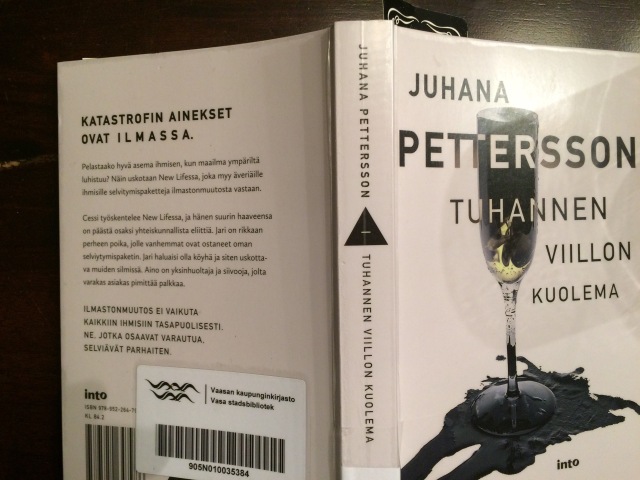Guest Editorial
Dear America and all other nations around the world,
On October 9, 2017, at about 8 pm, a 19-year-old student at the Texas university where I teach was escorted to the campus police department for a welfare check. Once inside the building, he pulled a handgun, killed the officer leading him in, and fled on foot. Campus, city, and state police, along with county sheriff’s deputies and a SWAT team, captured him in about two hours. The morning after, the university community was on edge. Sirens sang all over campus because everything, everyone, every twittering leaf looked like an explosive device.
The shooting on my campus followed in the wake of the deadliest mass shooting in U.S. history in Las Vegas, which followed in the wake of other shootings:
this shooting,
that shooting. Unprecedented fires in the West, hurricanes in the South and East. These events are parallel to the latest public scandal—this one on Hollywood’s Harvey Weinstein for decades of sexual misconduct. And then the lies from his former supporters and colleagues who had to distance themselves from him—“I had no idea!”—initially, the Clintons, Meryl Streep (a self-proclaimed champion of women and the oppressed), and Judi Dench; now there are many, many others. They all knew, and did nothing because it was in their interest to do nothing: money and power, fame and fortune, keeping it for them, keeping it from us. And alongside all of it, President Trump exchanging threats with nuclear North Korea, tossing about words to seed a garden in hell: “total destruction.”
To live in America in the 21st century is to live inside a bubble flush with oxygen while someone goes around distributing matches.
America is not the greatest country in the world.
The President of the United States is not the leader of the free world.
And the American Dream—if it ever lived beyond fantasy—is dead.
We all know these things to be true, but our media, our politicians, our corporations spoon these lies down our throats day after day to keep us, the citizenry, doing what is in
their best interest: buy, spend, consume, keep your mouth shut.
Dial it out a few hundred miles into Earth’s orbit, and note that these problems are human problems: human created, and of concern almost exclusively to humans. They are distractions, merely, from real problems. They are as petty as we are petty, and while we are championing our special causes on Facebook and Twitter, another hurricane is beating us flat.
Trump, and his tactics of chaos and obfuscation, is a distraction. Trump is not the problem (nor is he the answer). He is a symptom of us, which means you are the problem. I am the problem. We are all the problem. No matter your position, you and I, all of us contributed to the cultural, economic, and political climate in which Trump was elected. And the problem with our great distraction is that it puts us off the real problem, the bigger problem: climate change.
In his essential book,
Learning to Die in the Anthropocene, Roy Scranton spells out the future of humanity in the world we have created. He does not offer a possibility of climate change impacts if we don’t take action now; this is the impotent cry of the establishment. And he does not mourn the bunnies and bees of our special Earth. The Earth will be just fine without us, just as Mars is fine without us, perfect and beautiful, even, with no life at all. What Scranton is willing to say, and what we all know is true but are unwilling to accept, is that climate change will lead to the collapse of our civilization and all its wonders. “This civilization is already dead,” he writes.
Things are going to look a lot different from here on out, and you and I are powerless against it. Trump is powerless against it. Monsanto and Exxon are powerless against it. The United Nations is powerless against it.
I grew up in the
U.S. Forest Service, where my father invested 34 years of his life before he went to work for the state of Idaho, and then went to Washington D.C. to direct the
Bureau of Land Management under President Bush. Mine was a boyhood in wild places, a collection of government houses around a district office in the mountains in Oregon. There, I roamed freely among the trees and creeks, caught lizards sunning on the rocks, fished from a canoe in the lake near the house, and attended a school of just over 30 students distributed across eight grades. For me, the world was a sea of wilderness with a few scattered cities, none of which I had ever seen. It wasn’t until high school, or even after, that I realized that as long as fossil fuels are flowing, the world is really just the opposite: a sea of cities whose influence pushes into the few remaining and scattered wild lands. And this is so more and more each day.
There is no solution to the problem of climate change. Democracy and its capitalist economy will not fix it. A dictator and a communist economy will not fix it. A culture war between us and them will not fix it. A race war will not fix it. A gender war between men and women will not fix it. I avoid driving, recycle, and turn off unused lights in my house, and even if everyone in the world does so too, the Earth’s warmer future will still arrive; it is here already. And what is left for us to do is to cope, adapt, endure.
I lived for a year and taught school on the
Navajo Reservation in New Mexico. During that time and after, I read widely about Navajo history and culture. In the Navajo creation story, there is a time when women and men come to such odds that the Creator decides the only solution is to separate them by a river. The men are forced to live on one side, the women are forced to live on the other. Time passes, and the people begin to complain. The women miss what the men offer, and the men miss what the women offer. Each discovers that men and women are complementary; they are not the same, and they are not equal. Women possess attributes that the men do not have. Men possess attributes that the women do not have. The Creator then puts the women and men back together, and they go on living as before.
In the warmer future, human beings—all of us, everywhere—are going to face real challenges, challenges that threaten even our species’ viability. The extinction of
Homo sapiens is not a Hollywood movie scenario; it’s within reach during the next century. We have no time to publicly honor all our private wounds. Instead, we must honor our strengths and our differences. Then, one group of people with similar beliefs and values (a kind of tribe) may use their strengths to help another group of people with different beliefs and values. Globalism is not the answer because its underlying mission is to further consolidate wealth and resources, a system in which most of us serve a few of them. The answer, or perhaps our best chance, is some form of cooperative tribalism, which brings all the best of each group together to benefit the whole. And groups would cooperate because we have a common enemy: climate change, which is to say, ourselves.
In the warmer future, women and men are going to need each other. Indigenous people and so called non-indigenous people are going to need each other. People with darker skin tones and people with lighter skin tones are going to need each other. People whose lives are guided by the
Quran and people whose lives are guided by the
Bible are going to need each other. This list goes on and on.
If we can’t all come over onto the same side of the river, and walk up the hill to higher ground carrying our strengths and differences with us, it is the river that will come over onto both sides and wash everything out to sea.
Yours,
Kurt Caswell



















